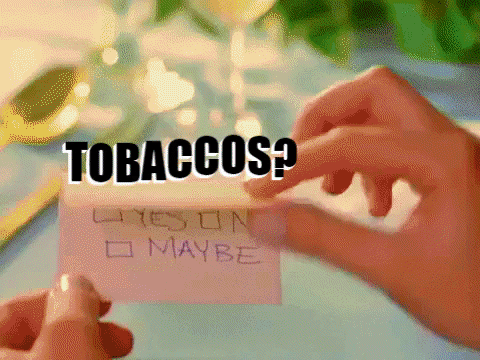Teenagers are 80% less likely to take up smoking than their 1990's counterparts

and in spite of this the CDC thinks there is nothing being done to combat smoking. At least according to Brian King, deputy director of the Office on Smoking at Health at the U.S. Centers for Disease Control, as he says the latest survey data on teen tobacco use "indicate that past progress in reducing youth use of these products has been erased."
The problem is that his viewpoint is as backward as the contemporary classification of eLiquids is, as currently they are considered tobacco products, even though they are absolutely tobacco free. Go figure.
An article about the 2019 National Youth Tobacco Survey, published recently in the CDC's Morbidity and Mortality Weekly Report, which is about as fun to read as it sounds, which also shows an increase of e-cigarette use among teenagers. The share of high school students who reported using e-cigarettes rose this year, from 20.8 percent to 27.5 percent, although the CDC cautions that the difference may be partly or entirely due to changes in question wording and survey methods.
According to the article; "Direct attribution of this change to actual increases in product use is not possible because changes made to the 2019 survey could also lead to higher estimates of use." Which is a valid caution, as you'd think you wouldn't even bother to compare survey results when the questions themselves are quite literally different, but hey this is the CDC we're talking about here, they aren't exactly up to par on the science stuff.
Despite alarmist headlines and hyperbolic clickbait spouting stuff like "a whole generation of young people" who supposedly got hooked on nicotine through e-cigarettes, just 9 percent of high school students reported vaping on 20 or more days in the previous month this year, while less than 6 percent reported vaping every day. The survey also reported frequent vaping is concentrated among teenagers who also have smoked. Even in the 2018 National Youth Tobacco Survey just 1 percent of teenagers with no history of tobacco use reported vaping frequently. These facts also suggest that teenagers who might otherwise be smoking are vaping instead.
Another interesting tidbit from the survey; "in 2019, the prevalence of cigarette smoking among youths was the lowest ever captured by the NYTS since 1999," which was the first year the survey was conducted. Back then the prevalence of past-month cigarette smoking among high school students fell from 28.5 percent to 5.8 percent. That downward trend not only continued but accelerated as vaping took off, which again suggests that e-cigarettes are replacing the conventional combustible smokes.
To be fair contemporary high school students are about as likely to vape as they were to smoke in 1999, but the upshot is they are 80 percent less likely to smoke. Since vaping is 95 percent less dangerous than smoking this shift represents a huge improvement in terms of public health. Yet according to old Brian at the CDC the situation is no better today than it was in twenty years ago. The rise of vaping, King says, has "erased" all "past progress." That position is purely anti-science if the CDC is actually trying to prevent disease, as smoking is one of the most dangerous and now easily avoidable of all preventable health risks.
King also insists that e-cigarettes "have no redeeming aspects among youth." Which is flat out wrong for teenagers who would otherwise be smoking. It's like the guy sees a teen smoking and a teen vaping and thinks; "Well that vaping kid should just pick up a pack of smokes!"
The CDC in all it's infinite wisdom insists there is no meaningful difference from a public health perspective, between a society in which 28 percent of high school students smoke and a society in which 28 percent of them vape. That position is scientifically indefensible and runs contrary with the agency's supposed purpose for existing in the first place.
What do you think about the Brain Kings stance on vaping? Is there a possibility he has his pockets lined with big tobaccos money? Perhaps he's just confused by scientific research, or willingly obstinate of the facts? Maybe he doesn't even care either way and just jumping on the anti-vape train?
7 Responses
TWXYmoPIGuKnSVcB
eEVijxHPcD
eAcjSNbJPluv
AxabROsKU
RWUIvpzycnl
IZqJlKUo
LKlaiwNvXEzQ
ZzpaTrev
taUEgoRmfevDxAc
DRHlZhfkjYIKyg
nsqhNmiKQkuW
rZWQNlnMSOFedRf






jKkrSlfQMysbxh
December 18, 2019
cLdhlRpo